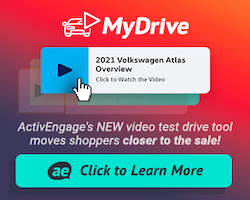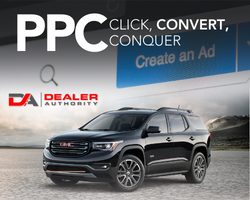Conversion rate: this is not a new buzzword. It’s a long-lived metric that requires attention.
With that being said, it’s a very difficult metric to compare side by side with other dealerships. In simplest terms, the reason why conversion rate is so difficult to compare is because most dealerships are not measuring the same conversions.
If your conversion data set is not exactly the same as the dealer in your 20 group, then you will be either fictitiously confident or sulking in data disappointment for no good reason. In some cases you may not even be able to compare your own conversion rate on a year over year basis.
Let me first properly define what a conversion is for the context of this article: a conversion is an action that is completed on your website, whether it be a form submission, page visited, phone call, or other action. These can also be called goals.
There is not typically a right or wrong goal to measure. Because of that, dealerships very rarely compare the same goals. There is also NO industry standard, and by default, each provider will track different goals.
Let’s look at an example of conversion rate results:
- Dealership A has a conversion rate of 3%
- Dealership B has a conversion rate of 20%
Which dealership is performing better?
This is an illogical question. Why? Because you cannot possibly know unless you ask a few more questions.
There are three main questions that need to be answered before you can attempt to compare properly.
1. What conversions/goals are the dealerships measuring?
If Dealer A is measuring form leads only and Dealer B is measuring form leads, phone calls, VDP views, SRP views, maps and directions, and more, then clearly an overall conversion rate is not helpful.
2. What 3rd party plugins does the dealership use?
This scenario very often gets overlooked, especially when comparing dealership stats year over year. Here’s an example: let’s say that your dealership used the native website providers credit application in 2014. In 2015, the dealership installed DealerTrack’s iframe app. Looking at the conversion rate for credit applications will require more digging than a basic Google analytics review.
Why?
Chances are in 2014 the website company counted credit application leads as a goal conversion. (This makes perfect sense and any company should use this as a conversion.) However, when the DealerTrack application was installed, any future conversion on that same page would not be counted. This is because 3rd parties operate outside of the dealership’s website. Even if the application looks like the dealership’s website, if the widget is from a 3rd party it will most likely NOT count in your Google Analytics account. Therefore, in this example it would appear the goal conversions and conversion rate have decreased year over year. But has it really?
You need to look at more than Google Analytics to find out. Let me state this again: you will NOT be able to tell from Google Analytics. As more and more digital retailing solutions (DRS) are added to the dealership’s website arsenal, the problem can only be expected to get worse.
Another popular digital retailing solution is “MakeMyDeal”. This DRS is a lead-generation widget that houses a large CTA (call-to-action) which is typically pretty dramatic on a dealership’s VDP page. Any consumer engaging with this tool will also not count towards the dealership’s conversions in Google Analytics. Therefore, if you have 1000 visitors and 100 of them submit a lead through MakeMyDeal, the conversion rate would still be 0% according to Google Analytics.
Going back to comparing year over year data or comparing against another dealer in a 20 group would prove fruitless. Before pointing out a couple of examples where dealers have goal conversions set-up for DRS I will tell you most (~99%) do not.
3. What is your marketing strategy?
Yes! Your conversion rate is correlated to your advertising. I hope this point causes debate but no matter which stance you take, the fact is that conversion rate is defined as website leads/website visits. Whether you count unique or all visitors in the equation is semantics at this point. What you do need to look at is earned vs. unearned media. Earned media is simply website visitors you didn’t directly pay for (SEO, traditional marketing, etc). Unearned media consists of visits you did “directly” pay for. This can be paid social, PPC, etc. These need to be separated out to truly understand the effectiveness of your conversion rate. You may have a much lower conversion rate with earned media and still be out performing all of your competitors combined.
Let’s unwrap that statement.
Imagine a scenario where your dealership’s website magically ranks #1 in Google for the keywords “2015 Kia Soul”. You discover that MotorTrend’s online magazine links to your dealership’s website because your content is among the first source of information online about the 2015 Kia Soul. This drives thousands of visits, increases your website’s authority, and earns you several conversions. However, given the fact that “2015 Kia Soul” is so broad, chances are much of your traffic will not be relevant to your immediate business. In other words, the visitors may not ever become a potential customer.
Would you still want this “earned” traffic?
If the answer is yes then you understand the importance of authority (and the big picture.) A scenario like this is not uncommon. In fact, I have seen many dealers rank for national keywords while doubling their organic traffic YOY. Unfortunately, the drawback to this earned traffic is a lower conversion rate.
Please pay attention to that last word as it’s important to understand the difference. I am NOT advocating for lower conversions in exchange for traffic. In fact, in every case where organic traffic increases, total conversions should also increase. However, expect your conversion rate to decrease. There are a dozen more scenarios that can decrease conversion rate while increasing total conversions. Display and “push” advertising is one of many more examples.
So, then what do I measure?
My advice is to pay attention to your store. If you are in a 20 group and your conversion rate is lower than your peers I would not sweat it. Look at your total conversions and the % of increase or decrease over time. Since you may have 3rd party applications running on your website, the best place to analyze these numbers is within your CRM. Google Analytics is solid for conversion rate measurement when you know what you’re looking for and can ensure that you’re comparing apples to apples.








